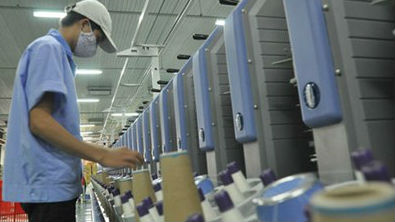Economist warns of Vietnam’s over dependence on China
Last summer relations between the two nations began to unravel following China’s placement of an oil rig in waters claimed by Vietnam near the Paracel Islands in the East Sea.
Though China withdrew the rig last July, the dispute has taken its toll on Chinese tourism to Vietnam.
According to official statistics Chinese inbound tourism into Vietnam fell 40% on year in the three months leading up to April this year, even though non-tourism trade has continued to surge.
“Despite predictions last May that Vietnam-China trade relations were on the brink of collapsing, non-tourism trade has continued to swell over the past year,” said Associate Professor, Dr Tran Dinh Thien, director of the Vietnam Institute of Economics.

Factories in Vietnam – many owned by multinational firms – are highly dependent on Chinese inputs Thien said, adding that Chinese companies also have an extensive share of Vietnam’s contracts for infrastructure and industrial projects.
According to statistics from the Ministry of Industry and Trade (MoIT), Vietnam’s exports to China have jumped up 17.84% since last May while imports from the northern neighbour spiked 31.16%, contributing to an ever widening trade shortfall.
According to figures of the MoIT for just the three month period January-March of this year alone, Vietnam’s exports to China dipped 1.2% while at the same time imports from China shot up 26%.
“These figures are very troublesome for the nation’s economy in light of China’s deployment of oil rig Haiyang Shiyou-981 in Vietnam’s waters,” Thien said as they are incipient of the underlying economic overreliance on China.
“China accounts for nearly 29.3% of the nation’s total imports,” Thien underscored, creating an unwise, unequal and unhealthy growing dependency of the national economy on China.
Thousands of factories in Vietnam rely on China for raw materials to keep production lines humming and finding alternative suppliers is not only difficult but would increase costs exponentially and threaten their bottom line profits.
For far too many companies there is little alternative but to trade with China, which supplies the nation’s factories with everything from the components to make smartphones to the fibre that labour forces weave into sweatshirts and t-shirts for international retailers.
According to Vietnam Customs, the country’s manufacturing sector is profoundly dependent on Chinese materials, relying on it for 70% of mobile phone components and a quarter of electrical equipment.
At the end of the day, local retailers from the very small mom-n-pops to the multinational giants throughout Vietnam remain stocked to the brim with Chinese products - everything from chopsticks to cloth and mechanical components.
Thien said the most disturbing aspect is that Vietnam-China trade ties will increasingly deteriorate as time goes by and it corroborates the fact that Vietnam’s economic restructuring efforts, at least to date, have not been successful.
There is also a large variance between Vietnam and China official trade statistics that need to be adequately reconciled. Last year, according to China, bilateral trade reached some US$83 billion while Vietnam’s statistics showed trade at only US$58 billion.
Another point of contention said Thien, is that Vietnam’s exports to China are mostly unprocessed commodities with low added value. Most notably, there remain shortcomings in the export structure from Vietnam to China and vice versa.
This translates to lost opportunities by Vietnam to increase its competitiveness and effectively join the global supply chain and begin producing high quality products with higher added value and profits, Thien stressed.
It also means that Vietnamese companies are missing out on the opportunities to develop in the global production network through closer connections with multinationals from around the globe as a good way to step up technology transfer and promote economic development.
(VOV)

